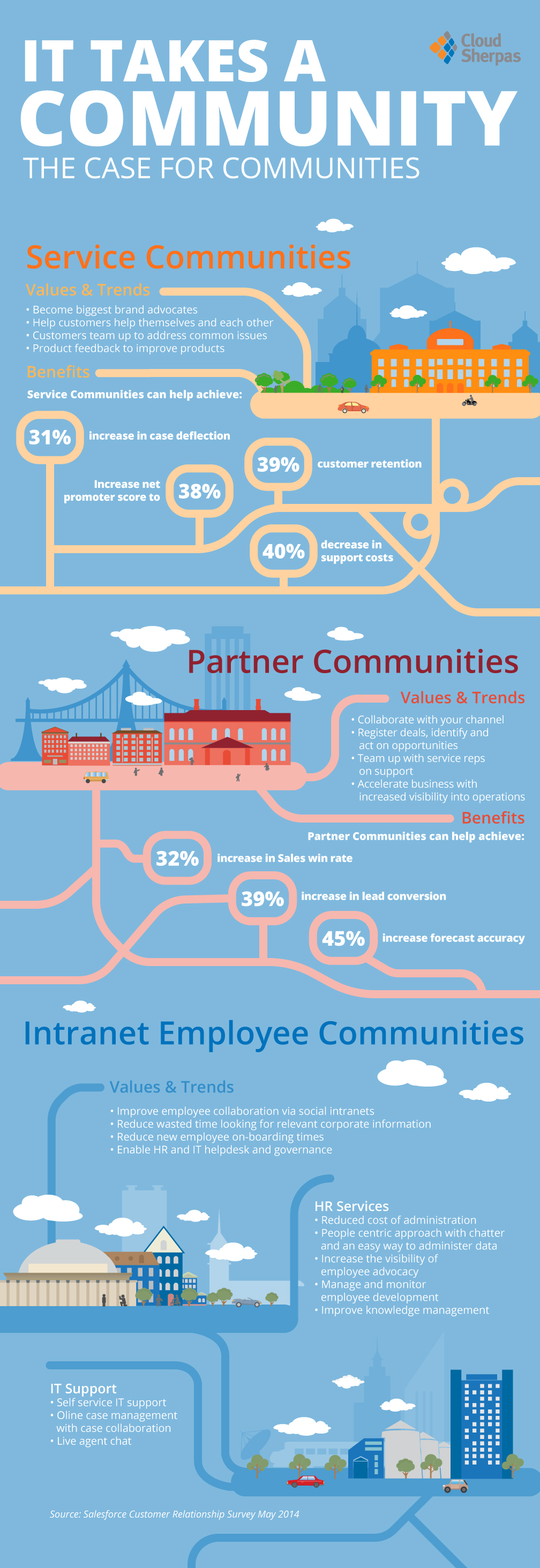
Get your FREE 30-day trial.
Please complete all fields.
In today’s information age, we’re all becoming savvy users who expect personalized information that’s tailored to our unique needs. Whether you’re building an eCommerce application, an employee community (intranet), a customer community or even a service console, your end users expect similar features to those on popular sites like Google, Amazon and Facebook. That’s because your users are not only familiar with the features of those sites, but they also value the level of personalization — which stretches beyond the web to mobile and even wearable devices — that those sites deliver.
So how can you create a personalized experience for your customers, employees and any other end users when building communities? It all starts with understanding who your users are.
To truly succeed on this point, you must take an outside-in approach to community development and maintenance. While this term (outside-in approach) is traditionally used by digital marketing strategists, it applies here as well. Simply put, it means looking at the entire community experience from the eyes of your end users. This outside-in approach calls for real-time analytics (as opposed to after the fact market intelligence), since you must be able to respond to users in real-time and tailor messages to capture their attention and stay in tune with their needs.
In order to better understand my users and their experience, I often build a Customer Journey Map, or a graphical representation of the entire user journey. If your end users are customers, for example, this map should span from the awareness stage all the way to the loyalty stage.

I find this map to be an invaluable tool because it empowers me to see the end-user experience from a much broader perspective. Creating this map helps me answer important questions like: Where are the touch points along the user journey? What are the opportunities on which I should capitalize? And what is the user sentiment at each stage?
That last point — sentiment — is an important part of understanding your users and delivering a personalized experience. Not all sentiment will be positive. For example, consider the journey where the user is a patient in a hospital. In this case, sentiment is most likely going to be negative, and we need to recognize that in order to tailor messaging to that patient in a sensitive way. Reacting effectively at sensitive touch points like that is a big opportunity to impact users and turn their sentiment around.
As the above example illustrates, once you understand your users and their journey and can identify key points of opportunity along this journey, you’re in a valuable position to improve the user experience by delivering on (or even exceeding) expectations.
Ultimately, delivering this kind of personalized experience can lead to numerous benefits. For example, it can empower users to share their opinions and even create a forum through which they can influence other people’s opinions. Building this type of environment is particularly important when your users are customers, as it can create loyal customers who advocate for your brand, and that is extremely valuable currency. Think about it this way: We all give a higher degree of credibility to a customer who defends a brand from negative posts on social media than to a company that defends itself. Furthermore, user generated content can be significantly more powerful than marketing collateral during the purchase process. When I research products, I frequently find myself checking out YouTube reviews to see what other consumers think about that product. While these reviews are certainly supplemental to marketing collateral, they do have a big impact on my purchase decision.
In any scenario, understanding user expectations reduces the risk associated with implementing a new solution, such as communities, that touches a wide audience. This knowledge allows you to build a roadmap for a solution that fits perfectly with your users’ journey, which is essential for designing a user experience that is personalized and effective. As a result, making a small strategic investment upfront in creating a Customer Journey Map will almost certainly lead to a positive outcome and a clear direction as your organization embarks on its communities implementation.
This post was originally published on the Cloud Sherpas blog.
Bojan Kalajdzic is a leader in the Salesforce Communities and Mobility practice at Cloud Sherpas. He has helped transform leading enterprise clients in Healthcare, Technology and Retail to build B2B, B2C and mobile communities. He is passionate about creating strategic solutions for challenging business problems. Bojan holds an MBA from the Meinders School of Business as well as PMP, Scrum Master and Scrum Product Owner certifications.
Pono Music built a community so their audiophile audience could have a place to get together. Learn more by downloading the free e-book.